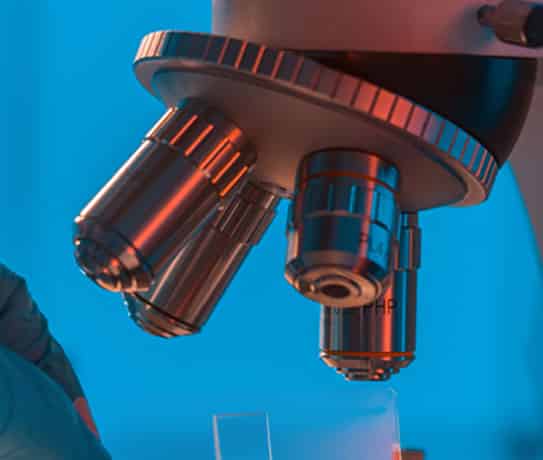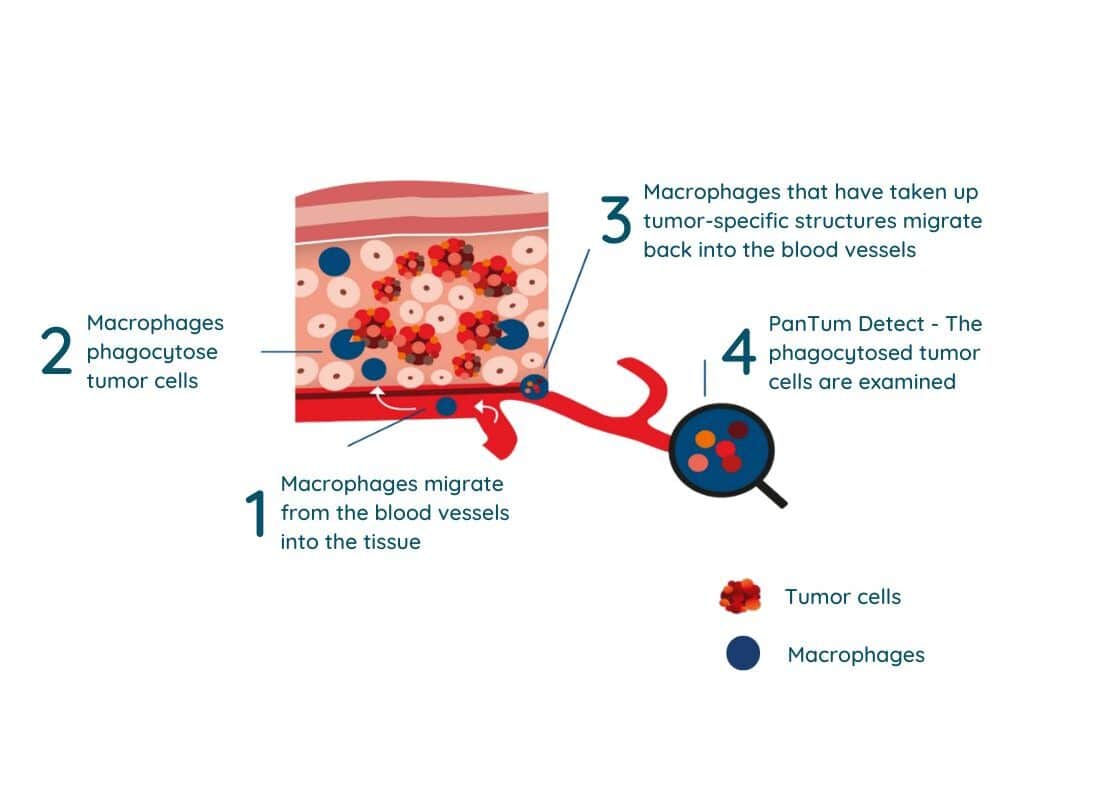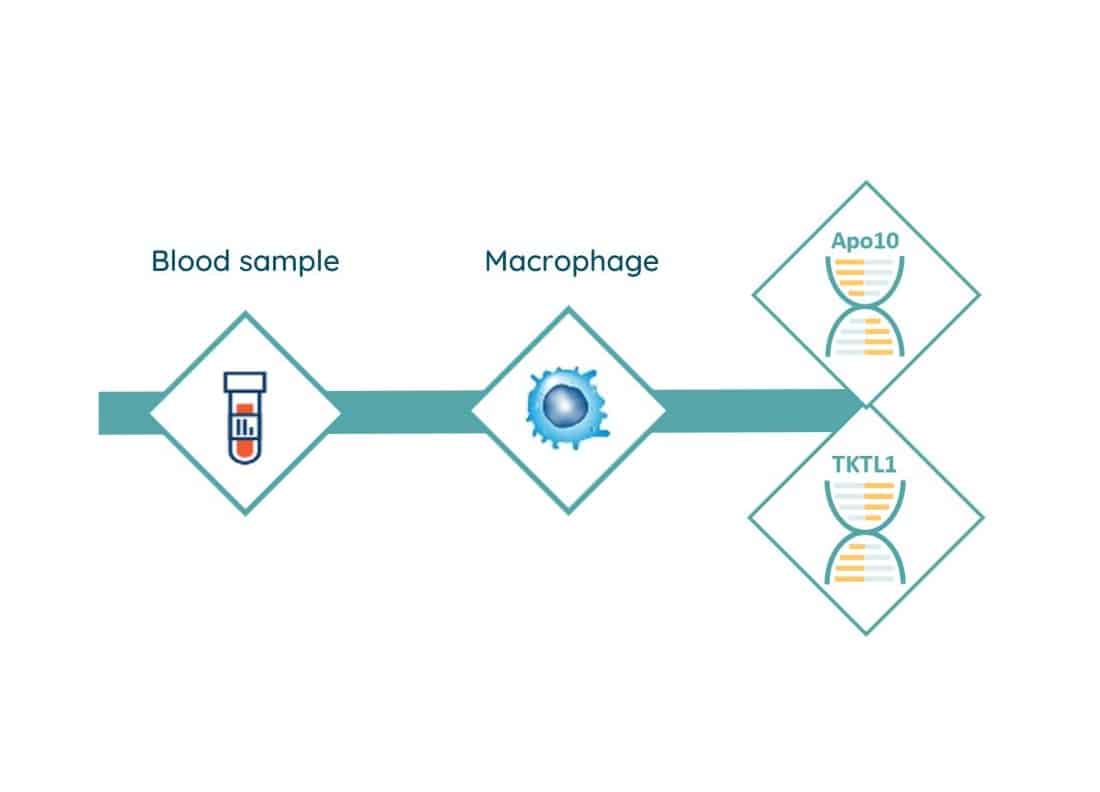
EDIM® technology is a form of “immunologic biopsy” for the detection of specific antigens in immune cells. The use of the immune system allows exceptional accuracy for diagnostics.
EDIM® technology detects disease-specific epitopes inside markophage
(Epitope Detection in Monocytes).
EDIM® technology screens macrophages for antigens that have previously been taken up into the cell interior by these immune cells through phagocytosis – which is why we refer to it as immunologic biopsy. For this purpose, CD14 and CD16 surface antibodies are used, which bind specifically to the surface of the cells. The cells are then briefly permeabilized to allow additional antibodies to enter the cells. These antibodies are each directed against the antigens that are to be detected by the method.

In the case of PanTum Detect, for example, TKTL1 and DNaseX (Apo10) antibodies are introduced into cells. Cell structures on the surface of cells can be detected very efficiently in blood samples using dye-labeled antibodies and subsequent detection of these dyes using laser beams in a flow cytometry procedure. This makes it possible to detect, count and further characterize phagocytes in blood. In this way, signals originating from bound antibodies inside the cells are also detected. This makes it possible to detect what the scavenger cell has recognized and eliminated by phagocytosis. For example, if tumor cells are present in the organism in the case of a tumor disease, the system detects signals from the dyes coupled to the TKTL1 and DNaseX (Apo10) antibodies.


